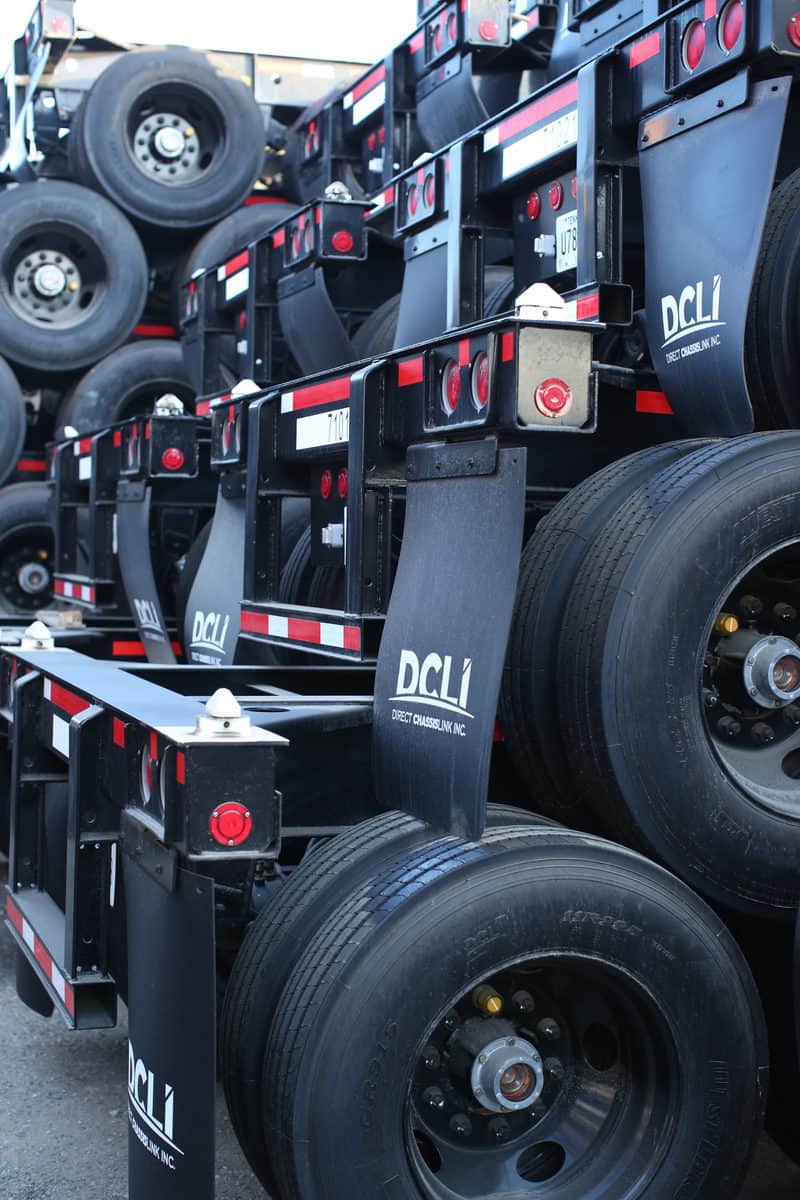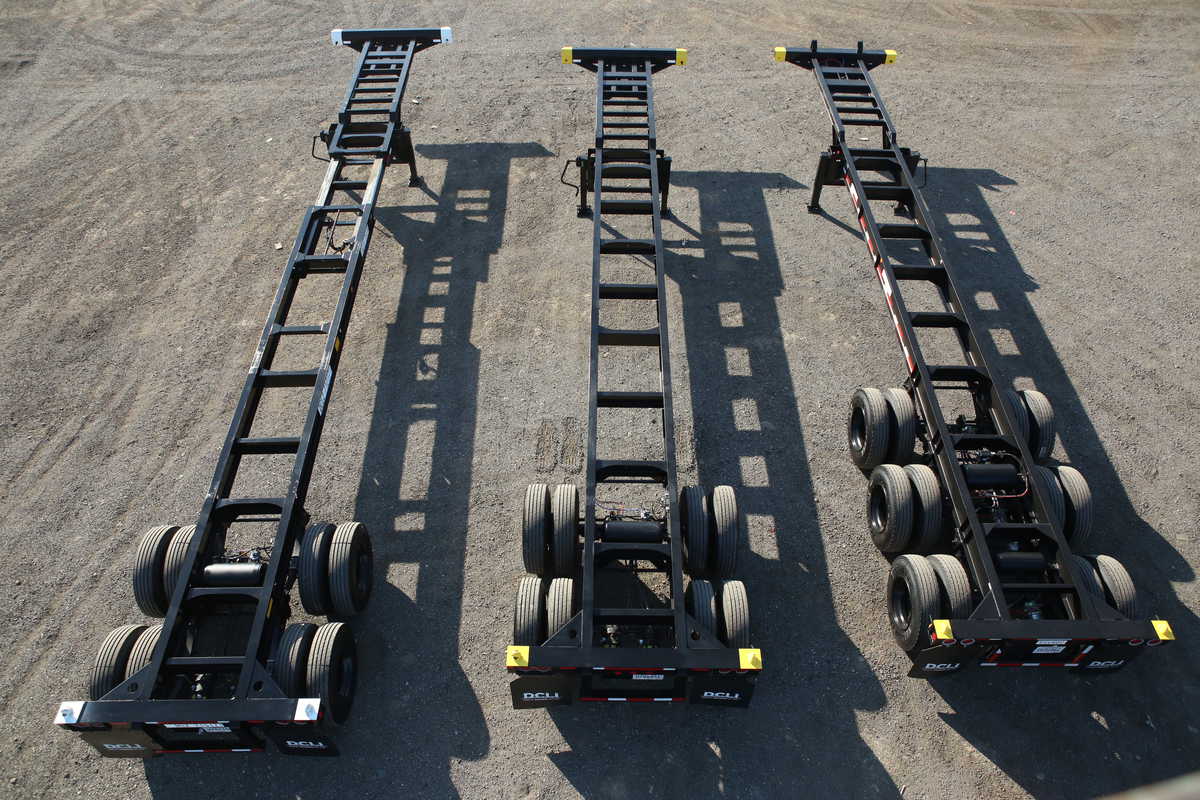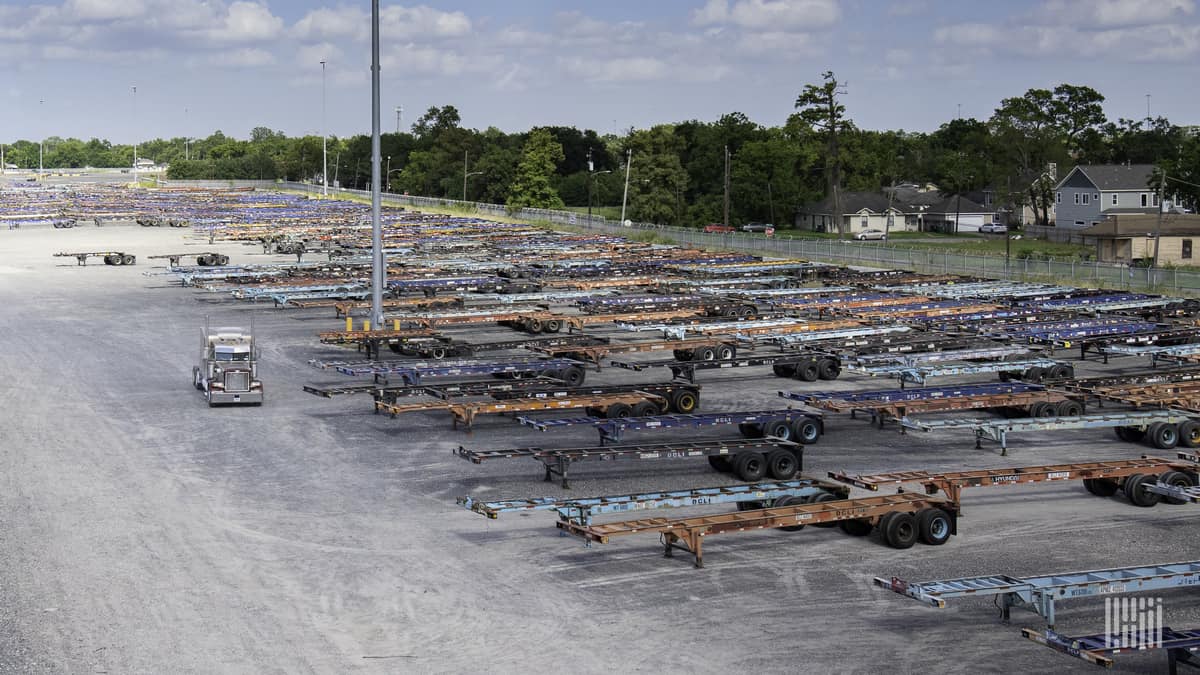Pick a poorly maintained container chassis or the wrong one from a pool, and you are in for a bad dray day.

American Shipper recently discussed this important topic for drayage truckers with Phil Wolfe, vice president of international sales for DCLI, the nation’s largest provider of intermodal chassis.
Many draymen retrieve their chassis from bustling pools located next to large container ports. However, no two chassis are alike — they vary by owner, customer and condition.
“Chassis pools offer truckers a lot of choice, and that can sometimes lead to questions about which chassis to select and how to manage the equipment,” Wolfe said.
Wolfe offers half a dozen simple steps that drayage drivers should follow when selecting a chassis from a pool.
Know who is paying for the chassis use
If the motor carrier is responsible for chassis use, he or she can choose any pool provider based on price, equipment quality and availability. If the chassis is paid for directly to an intermodal equipment provider (IEP) by an ocean carrier, non-vessel-operating common carrier or beneficial cargo owner, drivers must either use their chassis provider of choice or seek approval to use an alternative chassis source in advance of the move.
Understand the terminal operating model
Whether a terminal is “wheeled” or “grounded” will dictate how and where drivers should source the chassis. At a wheeled facility, the container should be mounted on the designated chassis provider’s equipment. At some grounded facilities, IEPs are on-site, allowing drivers to source the equipment at arrival.
Some grounded facilities, however, do not allow chassis to be stored at the facility, Wolfe explained. “For that type of facility, truckers should search out the most convenient location for chassis sourcing and source the equipment prior to arrival at the rail or ocean terminal,” he said.
Select equipment based on trip characteristics

Numerous options are available in IEP fleets, including new, refurbished and remanufactured equipment, making it possible to select a chassis based on the specifics of the dray.
“By aligning trip and equipment characteristics, such as making sure the chassis has radial tires for a long-haul move, drivers can ensure maximum efficiency and safety while mitigating any potential downtime,” Wolfe said.
Currently, most of the large chassis providers are swapping out older bias-ply tires for radial tires. DCLI, for example, has committed to having a completely radial tire chassis fleet by the end of 2023, with some markets completed as early as mid-2021.
Perform pre-trip inspection before exiting the gate
Despite increasing quality and reliability of pool fleets, the lack of Driver Vehicle Inspection Report (DVIR) participation and increasing prevalence of automated gate systems have, in fact, hindered the proactive identification and reporting of equipment defects, Wolfe said.
“By properly pre-tripping a chassis, drivers can ensure that any defects are addressed prior to leaving the terminal and minimize the potential for over-the-road breakdowns,” he said.
Use roadability repair services on the terminal
If a defect to the chassis is found, Wolfe recommended using on-terminal roadability services to make the repair. In addition to the safety implications that are created when a known chassis defect leaves the gate, the use of an over-the-road vendor can create additional costs for truckers.
Know the IEP’s road service policy and contact information
Despite the best maintenance programs, chassis do sometimes break down while in use by the truckers. Understanding what is covered under the IEP’s road service policy and whom to contact to dispatch a repair vendor is essential to getting the driver back on the road and servicing the customer, Wolfe said.
Report defects to IEP’s DVIR system prior to returning the chassis
To ensure that equipment is proactively repaired and ready for the next out-gate, Wolfe said drivers should report any known defects prior to returning the chassis. “This allows the IEP to flag the chassis as ‘out of service’ and direct a vendor to address the defect, thus keeping the fleet in top operating condition for every driver who uses it,” he said.
Click for more FreightWaves/American Shipper articles by Chris Gillis.











lindanhewal
Thanks